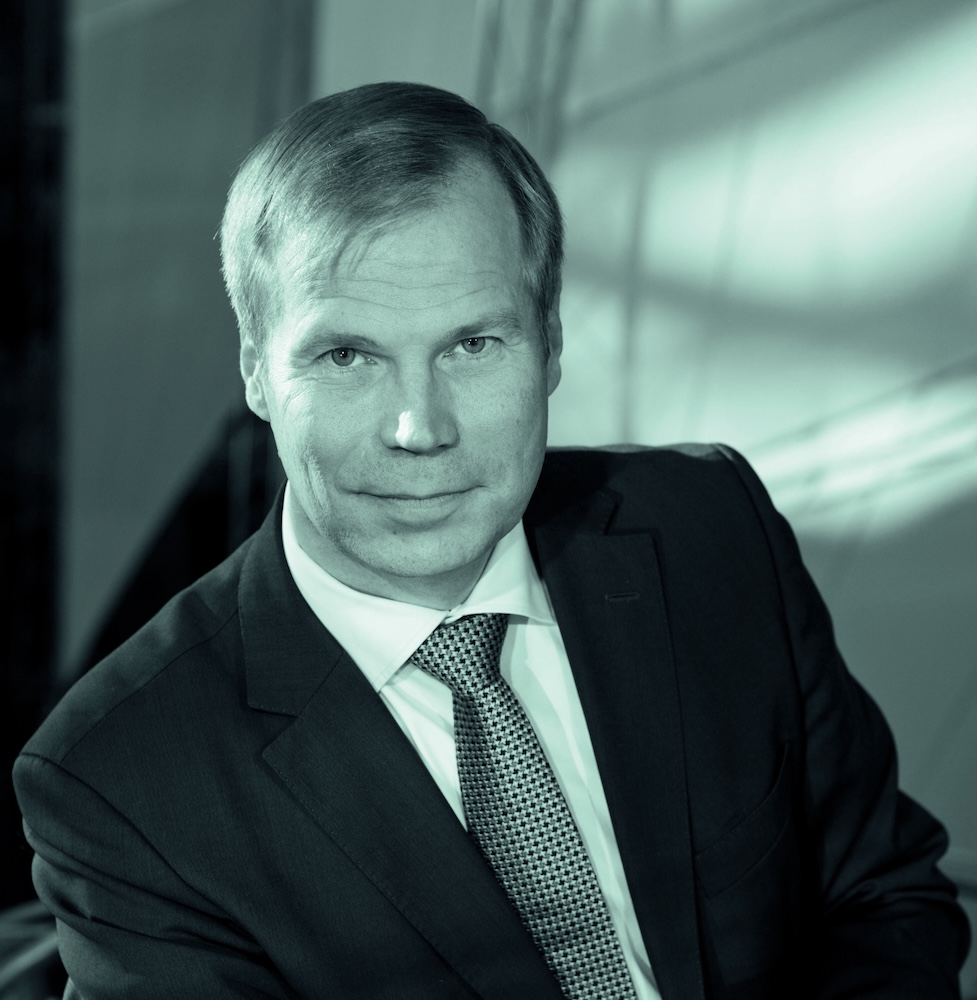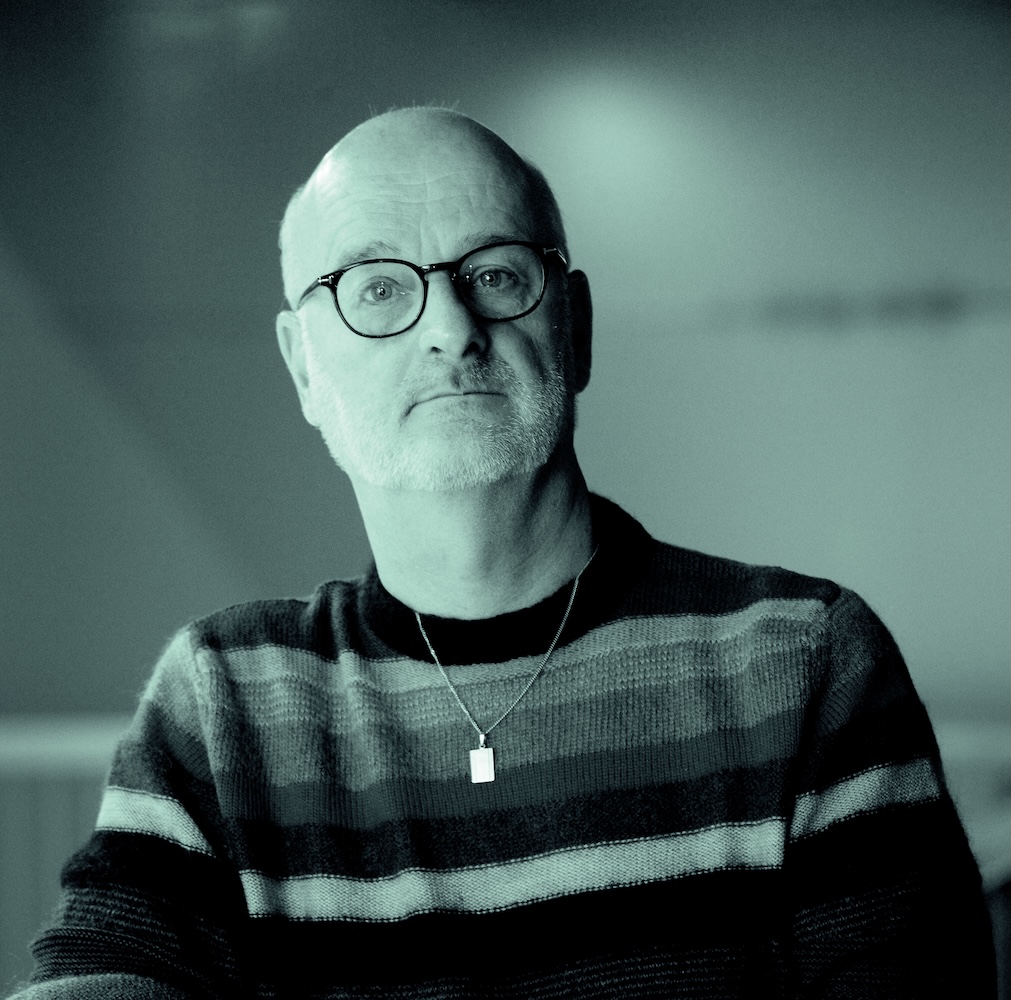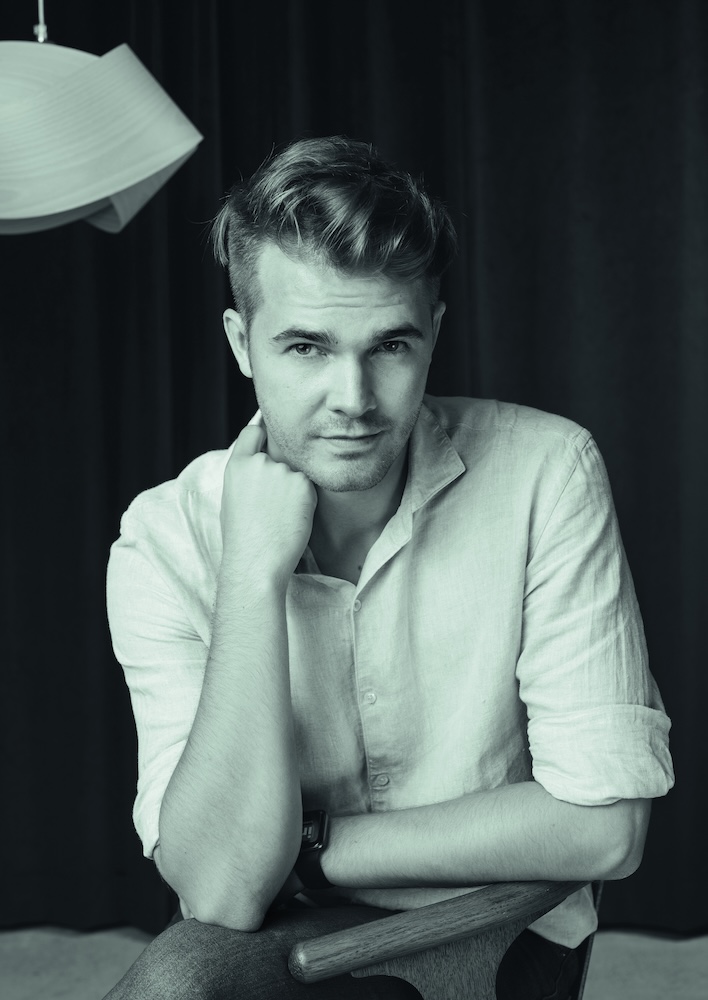For years, our working life has been undergoing a change that has no end in sight. Many companies have noticed that while hybrid work brings us flexibility, freedom and a wide range of benefits, shared practices, team spirit and the sharing of tacit knowledge may be lost.
Sponda wanted to understand in more detail the direction in which Finnish office work is developing and what kind of thoughts the topic is currently generating. In early 2025, Sponda collaborated with the research company nSight to conduct an extensive survey, which forms the basis for this material. Based on the study, nine claims about working life were formed to serve as the driving force for this publication. In it, 15 interesting and distinguished experts from different sectors of society provide their views on the bold claims about working methods, success, work culture, premises and atmosphere.
At the heart of this material are questions about how to create well-being and growth in companies and work communities in the post-pandemic period and how to solve the challenges of our time.
Community and culture in the workplace
We do not come to the workplace
just for work
One might think that people only come to the office to work. However, a study commissioned by Sponda reveals an interesting observation: the office attracts people because it offers human interaction.
73% of survey respondents felt that working at the office supports their well-being. The most important factor supporting well-being was the opportunity to meet colleagues. In the respondents’ opinion, face-to-face encounters strengthen the sense of belonging and increase the meaningfulness of day-to-day work.
The office creates a sense of belonging that is not conveyed by Teams invitations or emails. It is about sharing thoughts, venting emotions and laughing in fleeting moments that cannot be scheduled. These encounters build employees’ mutual trust, resilience and ability to resolve conflicts. They generate the intellectual capital that an organisation needs to operate at full capacity.

“We don’t come to work just for work. We humans are genetically social animals and as such, we are always interested in where our herd is, what it does and what we can do for our herd. Being alone for a long time has always been dangerous in human history.”
Minna Huotilainen
Brain researcher, professor, University of Helsinki
Picture: Jonne Räsänen

“Face-to-face meetings bring confidence to the work community, build socio-emotional glue, help reflect on direction and develop new ideas. We know that in work communities, humour and laughter, joy and a positive spirit are important capital.”
Juha Äkräs
Management expert, executive in residence, Aalto University
Picture: Roni Rekomaa, Lehtikuva

“At most, a remote meeting works as a replacement for a phone meeting. But if it is used to replace an in-person meeting, it will not work. When we’re interacting via a remote connection, we don’t get the sense of the other people. Sight is just one sense. Experiencing is the most important thing and you can only experience a person in the same space. Watching people through a screen is like putting a fly in a glass and trying to catch it through the glass. When viewed from behind the screen, reality is unreal. When there is more than one person in a live meeting, each brings their own dimension to the situation. This will not be achieved in remote meetings.”
Henrik Dettmann
Coach
Picture: Mikko Stig, Lehtikuva

“Face-to-face encounters strengthen the communality and mutual trust of the work community. The point is that when we meet each other at work, we also know each other better. And when we know each other, we trust each other.
The meaningfulness of the work is formed by the fact that our basic psychological needs are met. It means that individuals can fulfil their potential and utilise their skills, develop in their career, and accomplish things that are valuable to them. In addition, it is important for a person to have good encounters with other people at work – colleagues and customers. Then they feel a connection to themselves and to other people.”
Frank Martela
Philosopher, assistant professor, Aalto University
Picture: Johannes Terhemaa

“Hybrid work has many important benefits for organisations that are missing from remote work. The sense of belonging is better in hybrid work than in remote work. Additionally, receiving support from colleagues and supervisors is more effective when done in person. Working together face-to-face becomes more efficient when people know and trust one another.
Now, after the pandemic, we have the opportunity to reform working life and reflect on how both employees and employers benefit from ways of combining the best features of on-site work and remote work.”
Virpi Ruohomäki
Associate professor in occupational and organisational psychology, chief researcher, Finnish Institute of Occupational Health
Picture: Nina Karlsson

“Our social animal brain prioritises the perception of encounters between people. For example, our visual system is structured so that the strongest stimuli are produced by other people’s faces. Likewise, our hearing system is really good at identifying human sounds among noise and recognising emotional states and tones. These are important basic stimuli for humans, and if we are without them for a long time, it will affect us.
Loneliness poses a risk to our brains. We shouldn’t be without each other for too long.”
Minna Huotilainen
Brain researcher, professor, University of Helsinki
Picture: Jonne Räsänen

“The hybrid work model requires a new approach to work culture. It’s not enough to have processes in place; we also need to make sure everyone feels part of the community.
Leadership in a hybrid era requires clear and transparent objectives, along with open information sharing; however, the greatest challenge lies in maintaining social cohesion. We are good at setting goals and managing processes, but managing people is our weak point. Leadership in the era of hybrid work requires the ability to understand and support human interaction and collaboration – remotely or in person.”
Karoliina Jarenko
Non-fiction writer and business consultant
Picture: Heidi Strengell

“When we meet others face-to-face, we have the opportunity to deal in a social setting with nuisances that inevitably arise at work. The moments when we moan about something to a friend at the office or share something funny are really important. This allows us to cleanse and look after our minds and the work community. In remote work, it is often overlooked, leaving only discussions and agendas. And when the nuisances and the strain cannot be released, they begin to take their toll.”
Perttu Pölönen
Futurist, speaker, non-fiction writer
Picture: Jarkko Mikkonen
The break room is the company’s
most important space.
In Sponda’s survey, as many as 84% of respondents thought that on-site work strengthens the team’s sense of community and belonging. Typically, the team spirit in work communities is not born in meetings, but in the break room, over lunch and during random conversations. These moments lay the foundation for collaboration, foster trust and strengthen a sense of belonging.
The break room is also a place where different teams and roles meet, and information flows freely. It is the nerve centre of an organisation and often a more productive place than official meetings: it is where tacit knowledge, new insights and connections that support everyday work are created. Therefore, the break room is not just a space to enjoy a cup of coffee but the heart of the work community.

“The break room is the most important space in the workplace and the reason why people come to work in many workplaces. Building a community is the most important aspect of the workplace. What if there were no workplace community and everyone was just completing tasks?
In the break room, matters arise and intensify. It’s also easier to tackle them there.”
Minna Huotilainen
Brain researcher, professor, University of Helsinki
Picture: Jonne Räsänen

“Face-to-face encounters in the work community are invaluable. They bring the human touch to the work. For example, having lunch or an evening out in a restaurant with six people at the same table is completely different from trying to have the same conversation from different places remotely. Physical presence creates a very special interaction and exchange of ideas that cannot be completely replaced digitally.
Without regular encounters, it is possible to cope with work tasks, but the sense of community, cohesion and spontaneous insights may not arise. They often arise by the coffee machine, at lunch or in small everyday moments at the office.”
Marcus Reijonen
HR Director, Sponda
Picture: Sponda

“When shared humour or inside jokes occur in the workplace, a sense of community is also built there. With humour, the sense of belonging is strengthened.”
Frank Martela
Philosopher, assistant professor, Aalto University
Picture: Johannes Terhemaa

“People are most creative when they’re having fun. It is rare that Teams or Zoom sessions are hilarious. Face-to-face, discussions go in different directions, we talk on top of each other, conversation flows, we see each other’s reactions. It’s fun and we get to play. That is when we create new innovations.”
Perttu Pölönen
Futurist, speaker, non-fiction writer
Picture: Jarkko Mikkonen

“People need social interaction. The workplace must have meeting places that function as living room-like environments. In the common areas, you will also meet colleagues from outside your own team. At the same time, you can exchange ideas and discuss practical matters that have not been mentioned in the actual meetings. This speeds up the progress of projects and makes the work run more smoothly.
It is also important to be able to take micro breaks during the working day, and the working environment should support this. It also tells employee that taking breaks is allowed.”
Marianne Hoffmann
COO, Head of Asset Management, Sponda
Picture: Sponda

“If you hear laughter from the coffee room, the company has the main things in order. There is trust and good spirit in the work community.
Humour is used to maintain the team spirit. When a new employee learns the most important inside joke, they have become part of the work community. On the other hand, humour is also a challenging field. When joking, it’s important to be attuned to the situation and the community.
Laughter is physiologically also a very effective way to recover from strain. When we laugh, super-fast recovery takes place in our body. If you study heart rate variability and muscle tension, you will notice that after laughing, the person has recovered more. In other words, if you want to recover quickly, a bad joke might be a good approach.”
Minna Huotilainen
Brain researcher, professor, University of Helsinki
Picture: Jonne Räsänen

“Face-to-face presence is important because it contributes to the work community, the corporate culture and the shared identity. It also gives rise to practices through which ideas are developed and refined together. Iteration, spontaneous brainstorming and shared thinking flow more naturally when people are physically in the same space. That’s why these spaces for being together are extremely important.
Presence is like a glue that binds people and activities together – and is therefore one of the most important factors in a company’s success.”
Christian Hohenthal
CEO, Sponda
Picture: Sponda
Preconditions for growth and innovation
The best ideas
are created face-to-face
Sponda’s research shows that coming to the office to work supports creativity, productivity and problem solving.
According to the survey, brainstorming is more natural at the office for as many as 84% of the respondents. More than half of the respondents said they also get more done at the office. Three quarters of the respondents also stated that solving challenges is more efficient face to face with colleagues.
87% of the managers who responded to Sponda’s survey felt that they were more present at the office for their colleagues and team.
The job gets done in remote work too but something important may be missing. Few success stories are built via remote connections. Physical presence creates prerequisites for creativity and innovation. And they are the factors that give rise to the success of the company and the professional growth of individuals.

“Being together at work can seem like a waste of time for someone; just sitting in the break room, looking at someone’s holiday photos. But what if there was no work community and everyone was merely completing tasks? If we do not come together as a work community, we will miss out on all the development that will take place over the years, the assessment of what we are doing and the correction of direction, new opportunities and the elimination of risks.”
Minna Huotilainen
Brain researcher, professor, University of Helsinki
Picture: Jonne Räsänen

“The problem is that it is very difficult to show how humour, compassion or curiosity in the workplace are reflected in the company’s bottom line. The value of soft skills and human interaction is really difficult to measure, at least immediately.
I encourage companies to invest in humanity in spite of everything.”
Perttu Pölönen
Futurist, speaker, non-fiction writer
Picture: Jarkko Mikkonen

“When a maximum result is desired, people should meet and be in the same space. Creativity and courage flourish when you can sense that the colleague next to you is supportive and encouraging. This is how mutual trust is created. In a sports team, we talk about collective self-confidence and it is a feeling that is only experienced with another person in the same space. That’s when the most amazing things in the world are created.”
Henrik Dettmann
Coach
Picture: Mikko Stig, Lehtikuva

“Typically, it requires a certain kind of experts and a common mission in order to be able to grow via remote connections. There are examples in the world that an organisation can also succeed completely remotely. But in those cases, the whole company was founded on the idea of involving the best experts from around the world. In these organisations, all employees are truly self-directed, motivated and skilled. So it takes many things to succeed with this approach, and not everyone is capable of it.
In general, it is beneficial for the growth and development of the company that we are also together as a work community. When creating something new, it is especially useful to be together.”
Juha Äkräs
Management expert, executive in residence, Aalto University
Picture: Roni Rekomaa, Lehtikuva

“There has to be a feeling that we are doing something important together. In sports, it is said that “you have to love the game”. Working remotely full time reduces the love of the game because that love is based on human interaction and presence.
You cannot sense the emotions of others remotely, and then it is also difficult to help and be helped.
It is a privilege to be in a shared space where I can be myself and share my feelings and thoughts with others, as well as get help when things go wrong.”
Henrik Dettmann
Coach
Picture: Mikko Stig, Lehtikuva

“Being face-to-face in creative activities is important. Bouncing ideas off one another and creating something new requires unhurried face-to-face interaction. That’s why after-work gatherings, for example, often generate new ideas. Many successful ideas have been thought of while savouring a beer.”
Frank Martela
Philosopher, assistant professor, Aalto University
Picture: Johannes Terhemaa

“A functional hybrid work model depends a lot on the company, its culture and the nature of the work. There is no one right model, but a good hybrid solution can balance remote and on-site work so that the strengths of both can be put to use. The goal should be to be able to take advantage of the best of both worlds. Solely directing people to remote or on-site work is not part of modern working life or management.”
Christian Hohenthal
CEO, Sponda
Picture: Sponda

“Hybrid work practices are still taking shape and there is no one ready-made hybrid work model that would suit everyone. Effective policies must be created on an organisation-by-organisation basis.
Hybrid work also requires extensive planning, and the choices have an impact on, among other things, the needs of the premises, the availability of workforce and the commitment of the personnel. When policies are agreed together, it is possible to take advantage of the best aspects of remote and on-site work.”
Virpi Ruohomäki
Associate professor in occupational and organisational psychology, chief researcher, Finnish Institute of Occupational Health
Picture: Nina Karlsson

“The motivation for work increases by fostering natural interactions. There is a reason why a basketball team should stretch together, even though everyone has a different body and sometimes different movements work a little differently for different people. It is useful to create various kinds of encounters in the work community. The more you want to come to the workplace, the more meaningful the work is.”
Henrik Dettmann
Coach
Picture: Mikko Stig, Lehtikuva
Tacit knowledge
is dying
When we are in the same space, tacit knowledge is also transmitted. It is conveyed through practical application, casual chats and examples. Especially in demanding development projects and when starting new things, tacit knowledge is indispensable.
As many as 75 percent of the respondents to Sponda’s survey felt that being present at the office supports learning and developing at work. Equally many felt that the threshold for asking for help from colleagues is lower in the office.
Many companies have already noticed that common practices and the sharing of tacit knowledge do not happen without active measures and that they dissipate if people do not spend time together. In order to ensure learning and development, workstations alone are not enough. Spaces where it is natural to encounter others and share tacit knowledge are also required.

“Especially tacit knowledge requires a face-to-face encounter. Especially when new projects are started or demanding development is carried out.
From the point of view of well-being at work and productivity, it is essential that employees get to know each other. Face-to-face encounters best illustrate how one’s own work relates to the work of others and the processes of the organisation.”
Virpi Ruohomäki
Associate professor in occupational and organisational psychology, chief researcher, Finnish Institute of Occupational Health
Picture: Nina Karlsson

“The transfer of tacit knowledge is a key issue for the company, which usually happens face-to-face. Small observations in everyday life, sparring and setting an example often happen unnoticed when people work together. This is especially important for younger employees who are learning from more experienced colleagues – for example, in a junior-senior setting. If this is not resolved in hybrid work, young people may start to move elsewhere to learn. While seniors may find hybrid work effective, their skills are not transferred remotely in the same way. And that’s exactly what younger employees need.”
Christian Hohenthal
CEO, Sponda
Picture: Sponda

“At the office, important information is passed on in conversations in the corridors and by the coffee machines. Sparring takes place at a lower threshold on-site than by phone or in Teams. On-site work lowers the threshold for both learning and sparring.”
Iina Vapaavuori
Head of Leasing, Sponda
Picture: Sponda

“Companies looking for offices are increasingly looking for spaces that foster encounters between colleagues. Many companies have observed that the internal culture, the sharing of tacit knowledge, and the development of new ideas have decreased. To restore them, spaces are needed for gathering and working freely.”
Marianne Hoffmann
COO, Head of Asset Management, Sponda
Picture: Sponda
Office work determines the future of the city centre
The city centre is changing, with office workers playing a key role in this transformation
Work and the vibrancy of the city are an inseparable pair. The vitality of the city centre relies heavily on the people who work there. The employees of the offices are customers to the restaurants, cafes and shops of the city centre, and often stay in the city to spend the evening. For example, according to Sponda’s survey, 46% of people working in the city centre visit a restaurant or café during their typical working week after a working day. Therefore, the centres should also be developed from the point of view of office workers.
According to the City of Helsinki’s estimate, only a couple of thousand inhabitants live in the central area of Helsinki. Among other things, this is why offices in the city centre and their employees arriving from outside the centre are a significant part of the centre’s vitality. Employees with offices in the city centre constitute a large and dynamic group of individuals with considerable potential to revitalise the centre.
But how could this potential be better taken into account in urban planning?

“The importance of people working in city centre offices for the vitality of Helsinki’s centre is really big. They use the services throughout the day and are also more likely to stay in the city centre for the evening. It would be good to think about the centre from their point of view as well.”
Peggy Bauer
CEO, Helsingin Kaupunkitilat Oy
Picture: Camilla Bloom

“Employees working at the offices in the centre is of great importance for the vitality of the city centre. Some major European cities have central areas without workplaces. As a result, they are completely dead during the day. Round-the-clock vibrancy requires the area to have all possible premises and functions. For example, there must be balance in terms of housing and jobs.”
Tuomas Hakala
Architect, project manager, City of Helsinki
Picture: Tiia Ettala

“The city centre needs versatility. Only about 2,000 people live in the heart of the city, so vitality requires companies to be in the centre and their employees to come to workplaces. The city centre needs more flexible and modern premises that can also be built in existing buildings. However, we need investments and upgrading of the properties to meet the sustainability standards.
City planning plays an important role in this, and close cooperation with the city is necessary so that properties can be expanded, for example, upwards or towards courtyards. By means of real estate development, the city centre can be made more vibrant, but it requires time, active actors and long-term investment.”
Christian Hohenthal
CEO, Sponda
Picture: Sponda

“City centres will change in some way, but this change is still in progress. The change is influenced by both hybrid work and the transformation of retail. When people shop online, not all stocks have to be brought to the store. In this case, the stores become smaller, showroom-like spaces. New actors will also come to the centre.
But this change takes time and requires patience.”
Tuomas Hakala
Architect, project manager, City of Helsinki
Picture: Tiia Ettala

“The importance of low-threshold cultural experiences for the vitality of Helsinki city centre is big, and cultural services are a significant competitive advantage for any city. The goal should be a centre where you can casually drop in at cultural events, even after work or during lunch breaks. It is also of great importance for business.”
Anni Korkman
Programme Director, Helsinki Design Week
Picture: Heli Blåfield

“Working life is also at the heart of Helsinki’s potential tourism, as we would have a lot to gain if we could attract more large conferences and events from international large companies. Business travellers spend more money than other visitors and often come to Helsinki and Finland for the first time.”
Laura Tarkka
Head of Scandic Hotels in Finland
Picture: Scandic Hotels
We do not just come to the workplace, we also come to the pharmacy and the cinema
The importance of the location of the office is highlighted in the results of Sponda’s research. In addition to good transport connections, versatile services close to the workplace are important. 68% of the respondents considered it important that a day at the office can be combined with making use of amenities, meeting friends or hobbies.
In addition to transport connections, dining options and the possibility to combine an office day with other activities are especially important for younger generations. Almost all people under the age of 35 working in the centre of Helsinki include other activities, such as shopping and meeting friends, in their typical working week.

“I believe that we do not come to the city centre primarily to work, but to run errands and enjoy ourselves. The image of the city centre must be clarified and actively marketed. It has to be understood that we are competing for people’s free time. We have to make it clear what people can get when they come to the office in the city centre: for example, coffee in the market square on a summery morning before work or a visit to Amos Rex during a lunch break.”
Peggy Bauer
CEO, Helsingin Kaupunkitilat Oy
Picture: Camilla Bloom

“Location and local services have a significant impact on the choice of office. Possibility to have lunch with colleagues, a vibrant urban culture, restaurants and cafes, and the feeling that something is happening around you – all this increases the desire to come to the office. After work, you can meet friends or run errands, which makes everyday life run smoother. Central areas are faring well in this change in working life, and the same trend can be seen throughout Europe.”
Christian Hohenthal
CEO, Sponda
Picture: Sponda

“Enjoying being in a certain place is based on basic human needs. People want to see other people and interact with them, buy things, eat, and fulfil their other basic needs. Doing such things is useful to them, either socially or economically. That is why we aim to enhance the city centre, as everything that meets these needs contributes to the draw of that area.”
Tuomas Hakala
Architect, project manager, City of Helsinki
Picture: Tiia Ettala

“Urban planning offers several ways to attract people to the city centre more often, thereby increasing the vibrancy of the area. The most important way to get people to the city centre and offices there is accessibility with all forms of transport Public transport should be cheaper, so that people have a lower threshold to jump on the bus and come to the city centre – also to work. Parking should also be easier. There is a lot of parking space underground, but it is too expensive in the current situation. I would like to see joint campaigns that would bring prices down. Parking could be cheaper, for example, in the afternoons or when you use a service.
Employers could also establish more collaborative agreements with restaurants and other services to encourage visits to the offices. Employees could get to a nearby museum or eat at a restaurant at a lower price.”
Peggy Bauer
CEO, Helsingin Kaupunkitilat Oy
Picture: Camilla Bloom

“Helsinki should make bolder use of its own strengths, such as its shoreline. While areas like Löyly and Allas Sea Pool have already been successfully activated, there is still much more untapped potential. Cultural and leisure venues like these strengthen the appeal of the city center and help Helsinki compete internationally.”
Christian Hohenthal
CEO, Sponda
Picture: Sponda

“In my dreams, the public spaces and service offering of the city centre are specialised in such a way that the city centre offers something that other areas do not offer. It must be possible to make better use of public space, such as a terrace space. There is still a great deal of untapped potential in maritime surroundings. Helsinki has a truly unique maritime connection, and in very few European cities, the sea is such an integral part of the centre. In addition, Helsinki has a magnificent archipelago – let’s take advantage of it.”
Peggy Bauer
CEO, Helsingin Kaupunkitilat Oy
Picture: Camilla Bloom

“Countries are known for their capitals, so Helsinki is Finland’s calling card. In order for us to have a lively capital, we must change the Finnish mentality and start to appreciate services: cafes, restaurants, concerts, brick-and-mortar stores. Good services are important to both locals and travellers. In Finland, decision-makers do not take tourism seriously enough, and we as a society do not understand the enormous impact that a living capital and tourism have on Finland. Vitality can and should be bought with money. Helsinki invests 6.6 million euros in the development of tourism and Copenhagen 16 million euros.”
Laura Tarkka
Head of Scandic Hotels in Finland
Picture: Scandic Hotels

“Services near the office also make the company’s everyday life easier. In a centrally located office, it is not necessary to offer employees everything, such as your own sauna or gym, as the surrounding services are used by employees and increase the attractiveness of the office.”
Christian Hohenthal
CEO, Sponda
Picture: Sponda

“We should be able to provide those working in the heart of the city with more experiences in their day-to-day lives. Cultural experiences should also be accessible outside of office hours, allowing you to visit a gallery, theatre, or poetry event after the workday.
Helsinki Design Week and other cultural events can serve as laboratories for testing innovative use of space or other things that benefit urban development. At Helsinki Design Week, we have taken over empty spaces for exhibitions, parties and discussions. As a result, the potential of these spaces has been seen and permanent use has been found for them. Culture highlights the versatility of central spaces for both residents and urban developers.”
Anni Korkman
Programme Director, Helsinki Design Week
Picture: Heli Blåfield
The anatomy of a perfect office space
Office space is a big draw for
top experts
The office is much more than four walls and a ceiling. It is a strategic competitive factor for the company.
A company’s premises are also an asset in recruitment, as the best experts carefully select their working environment. At its best, an office supports both the well-being of individuals and the success of the entire organisation. But what makes an office a space that is attractive and truly supports work?
Good facilities can support a sense of community, increase job satisfaction, or even offset pay. Similarly, a bad office space can spoil even a good working atmosphere. While the location of the office is also of great importance, a good location does not mean the same for everyone. For one person, efficient public transport is important, while for another, the ability to commute to work by car is essential.
The perfect office space is a well-considered entity that supports the smooth running of work and the entire business of the company.

“What matters is what you get from the office that you can’t get from working remotely at home. What the physical environment of the office makes possible, what I can not get from the screen and how those things have been taken into account in the design of the space.”
Perttu Pölönen
Futurist, speaker, non-fiction writer
Picture: Jarkko Mikkonen

“Office spaces have a significant impact on a company’s ability to innovate and grow. There is research data on how much more innovations are created through encounters. And when space supports encounters, it also supports innovation.
The office is also an important recruiting asset. Already in the early stages of the recruitment phase, many people consider where the company is located and how to get there. And attracting the top talent has a huge impact on growth.”
Iina Vapaavuori
Head of Leasing, Sponda
Picture: Sponda

“A perfect office space is not just a place to do work, but a tool that supports a sense of community and the meaningfulness of work. It should respond to what we want to achieve as an organisation and not just be an appropriate number of square metres.
At its best, the office facility has a purpose that produces more than just work performance: it supports work, encounters and a shared culture. Just as a production line is a central part of a factory, a office facility should be an equally important part of an expert organisation.”
Marcus Reijonen
HR Director, Sponda
Picture: Sponda

“There are many things that can increase working remotely. One of them is a physical space, an office, that does not attract employees to work or does not have the right spaces for work. As a result of hybrid work, companies have moved to smaller premises. But if the office does not even have a seat for everyone, that sends a message to employees: do not come here, you are an expense and not an asset.
By the way, it is no coincidence that the best sports teams create a competitive advantage through comfortable facilities.”
Henrik Dettmann
Coach
Picture: Mikko Stig, Lehtikuva

“It is about the whole package. Even the finest office space loses its meaning if the workplace atmosphere is terrible. And vice versa. A good atmosphere, a nice work community and, for example, a good salary make up quite a lot for poor location and facilities.”
Tuomas Hakala
Architect, project manager, City of Helsinki
Picture: Tiia Ettala

“With regard to premises, sustainability is also an important emerging criterion for an increasing number of companies. This is particularly the case for the city centre, as well as for international and large companies. Many companies want data on the property’s sustainability to be used in the company’s own sustainability reporting. For example, companies are interested in whether the property has an environmental certificate, how much waste the property generates, how much electricity is used and how the electricity is produced. When renovating premises, for example, the carbon footprint and the adaptability of the premises are of interest.”
Iina Vapaavuori
Head of Leasing, Sponda
Picture: Sponda

“The characteristics of a workspace that supports well-being include, firstly, health and safety, such as ergonomics, indoor air, lighting and sound conditions. Equally important is the functional dimension, that is, how the space supports the performance of work and work processes. The social dimension is also very important, i.e. how the space supports collaboration, learning and brainstorming with others. It is also important to note that this dimension is missing from homes and virtual technology cannot make up for it.
The last important factor is the psychological dimension on the individual level: how the space provides an opportunity for privacy and regulation of stimuli. In practice, this means the possibility to perform work that requires concentration and emotional work.”
Virpi Ruohomäki
Associate professor in occupational and organisational psychology, chief researcher, Finnish Institute of Occupational Health
Picture: Nina Karlsson

“Employees in companies are increasingly hoping to have spaces for encounters with their colleagues. Many companies have realised that their internal culture and the development of new initiatives have diminished. In order to restore them, spaces are needed for joint development.”
Marianne Hoffmann
COO, Head of Asset Management, Sponda
Picture: Sponda

“At the moment, a strong trend for offices is to have larger meeting rooms, so-called townhall areas, which allow larger groups, even the entire staff, to gather. They serve as places to meet colleagues and hold internal or external events. They are kind of the heart of the company.
Another key factor is the versatility of the premises. Employees need spaces where they can focus and spaces where they can collaborate or have conversations. The possibility to move between different spaces during the day, depending on the nature of the work, increases well-being and efficiency.”
Christian Hohenthal
CEO, Sponda
Picture: Sponda
The office must support
concentration
According to studies by the Finnish Institute of Occupational Health, office spaces usually have the most room for improvement in how they support concentration.
In Sponda’s survey, 67 percent of those who preferred to work remotely said they chose remote work when they needed a quiet space to concentrate. 59% of respondents felt that it was more difficult for them to focus on work at the office. It was one of the reasons why employees worked at the office less regularly. If the office lacks sufficient spaces that promote concentration, it may lead to prolonged remote working.
In the era of hybrid work, it is extremely important to think about what factors affect concentration in the workplace, where interruptions arise and how they could be eliminated. Telephone booths alone do not always solve the problem, and a broader understanding of working methods and more extensive spatial planning may be necessary. It is important to understand that work ergonomics also encompasses mental strain.

“Many people work from home because they can concentrate better there. This must definitely be changed, because the office should also be a place where people are able to focus on work. In modern offices, open spaces and quiet areas are invested in, but for many this is not enough. Perhaps offices should have more enclosed spaces for work requiring prolonged concentration. Remote work should be more about flexibility than concentration.”
Marianne Hoffmann
COO, Head of Asset Management, Sponda
Picture: Sponda

“Office spaces generally have the most room for improvement in how they support concentration. An extensive survey was carried out in the project that examined expert organisations, and the need for concentration and spaces without disturbances emerged as a key issue in the results. The study also found that negative estimates of workspaces were associated with a higher amount of remote work. A negative experience of the office spaces was a factor in people choosing to work remotely.
Positive experiences of workspaces were also linked to better well-being at work. Thus, it can be concluded that tranquil working conditions can even help protect against short-term sick leave.”
Virpi Ruohomäki
Associate professor in occupational and organisational psychology, chief researcher, Finnish Institute of Occupational Health
Picture: Nina Karlsson

“If the office lacks sufficient spaces that promote concentration, it may be one of the reasons for prolonged remote working. In addition to the telephone booths, there should be an area dedicated to quiet work, even if it is open space. This space needs to be maintained and made sure it stays quiet as well. Spaces of different sizes are also needed for concentration, and they should be equipped with screens.”
Iina Vapaavuori
Head of Leasing, Sponda
Picture: Sponda

“The ergonomics of work is increasingly important, as modern humans have largely lost connection to their own bodies. We have delegated the responsibility for our well-being to smartwatches and smart rings – the apps remind us to move and sleep, and then reward us with points. People need the prerequisites for taking care of their body and mind easily at work.”
Perttu Pölönen
Futurist, speaker, non-fiction writer
Picture: Jarkko Mikkonen

“According to studies, there is a need for versatility in office spaces. There is a need for both shared spaces and spaces that support concentration. Telephone booths are good for short periods of work requiring concentration, but spaces suited to longer periods of such work are also required.”
Virpi Ruohomäki
Associate professor in occupational and organisational psychology, chief researcher, Finnish Institute of Occupational Health
Picture: Nina Karlsson

“Cognition is place-based, that is, the mind works in different ways in different places. Some may have the assumption that there is a lot of disruption and interruption in the workplace and therefore prefer to stay in remote work. But instead of staying at home, you should think about what those interruptions in the workplace are and how they could be eliminated. When considering the physical working environment, it is necessary to understand the things that affect the well-being of the brain or what would be the best working environment for the brain.”
Minna Huotilainen
Brain researcher, professor, University of Helsinki
Picture: Jonne Räsänen

“A home may seem like an attractive option for work, but it is worth noting that homes are not designed for work and therefore they do not make the best working environments. There is also a great deal of variation in employees’ home conditions, as homes and conditions are very different. The office, on the other hand, is designed for work, so the premises, furniture and equipment are more ergonomic. Office premises play a crucial role in the smooth operation and well-being of the workplace.”
Virpi Ruohomäki
Associate professor in occupational and organisational psychology, chief researcher, Finnish Institute of Occupational Health
Picture: Nina Karlsson
Beanbags do not interest anyone if they are in the middle of nowhere
The location of the office is not just a logistical issue; it is also part of the company’s calling card. A central location says something about the brand, its values and how dynamic the company is. Location can even be a company’s single most important draw.
The customer’s first impression is shaped by the environment. An inviting office in a good location can even influence the choice of a collaboration partner.
It is also vital for the employer brand for the company to have a central location. If the location of the office was the only differentiating factor between two job offers, 47% of respondents to Sponda’s survey would choose a job in the centre of Helsinki. If the office was located in the centre of Helsinki instead of another location, 32% of the respondents would work at the office more often.

“One doesn’t go to a lavish office in the middle of nowhere; rather, it’s the overall experience that counts. There is also a strong competitive advantage for the employer if the office is close to the centre’s services. The combination of good premises and excellent services is extremely significant. It is also important for the employer image to be close to the centre.”
Peggy Bauer
CEO, Helsingin Kaupunkitilat Oy
Picture: Camilla Bloom

“Office location has become an increasingly strategic factor for businesses. Location can communicate a lot about the company’s brand to both employees and customers. The location influences how often staff are willing to come into the office, how to attract the best new talent, and the kind of experience customers will have of the company.”
Christian Hohenthal
CEO, Sponda
Picture: Sponda

“The centre of Helsinki will be a winner in this post-pandemic era, as it will be able to offer personalised facilities. Businesses are competing for the top experts, and when people can choose where they want to go, location plays a big role. People don’t want to go to an office along Kehä III but rather to one on Bulevardi.”
Tuomas Hakala
Architect, project manager, City of Helsinki
Picture: Tiia Ettala

“For companies, the most important criterion for choosing an office is still location. This means accessibility and local services, the vibe of the area, as well as the neighbours. It is increasingly important to determine how the employee benefits from coming to the office.”
Iina Vapaavuori
Head of Leasing, Sponda
Picture: Sponda

“Location plays a big role and what is outside the office is especially important. For example, gyms, restaurants and the opportunity to run errands make the working day more efficient and meaningful. Of course, the cost of facilities is often higher in the city centre, and not all businesses can invest in a city centre location. But we have found that more and more companies that did not previously operate in the city centre are ready to move to there to attract employees.
Sometimes you can also reduce the number of square metres, thereby reducing costs, when you don’t need your own restaurant or gym and you can rent the meeting rooms from outside.”
Marianne Hoffmann
COO, Head of Asset Management, Sponda
Picture: Sponda

Final words: Humanity will be emphasised in future working life
Our working life is in many ways in transition. In the post-pandemic period, we continue to look for the most effective forms of hybrid work and consider the benefits of working face-to-face with other people.
At the same time, another, probably even bigger, change is underway. Artificial intelligence is revolutionising many kinds of work. That’s why we need to consider what makes us special as human beings. Before long, AI can do almost everything that an office worker can do, but the question is, what should it do? What is good, beautiful or valuable? It is up to us to determine. For example, a sense of style is a skill that requires human experience, senses and interpretation.
In future working life, humanity will play a central role. A machine does not touch or breathe and it is not present for us. A machine may have all the information, but it does not care who it is talking to, for example. Instead, as humans, we can take into account other people and their circumstances. A machine can only pretend to do all this, and in many situations it may be enough. However, sitting next to a person in silence is very different from sitting next to a robot in silence. The impact of presence is great.
It should also be noted that a more efficient solution is not always better. A remote meeting is an effective way to save time, but is it a better method of interaction? We need to be more sensitive about what works in each situation. How can businesses and office spaces promote a sense of humanity? While it is very difficult to show how humour, compassion or curiosity in the workplace are reflected in the company’s bottom line, we need to believe that they are. The value of soft skills and human interaction is really difficult to measure with numbers, but I still encourage companies to invest in something that does not produce results that are easy to demonstrate with data. In humanity.
Perttu Pölönen
Futurist, speaker, non-fiction writer
Thanks for reading!
Hopefully, you gained some new insights.
The material is based on a survey published in April 2025, which Sponda carried out with nSight. The survey was filled in by more than 1,180 office workers in the Helsinki Metropolitan Area, who gave their opinions on remote and on-site work and the working environment.
Read the surveyShare:

